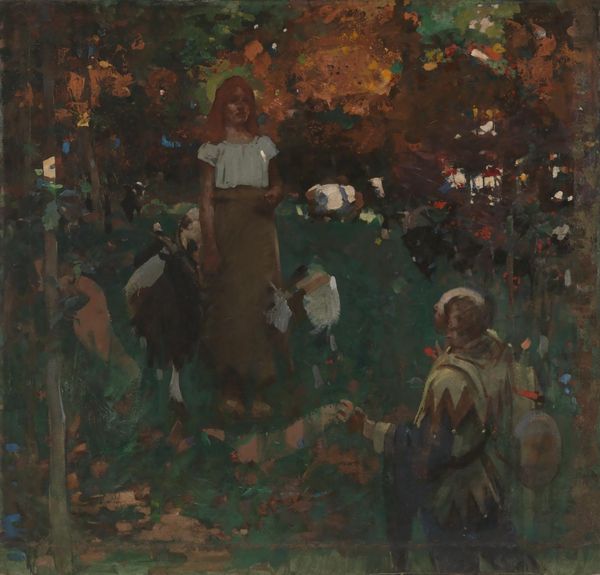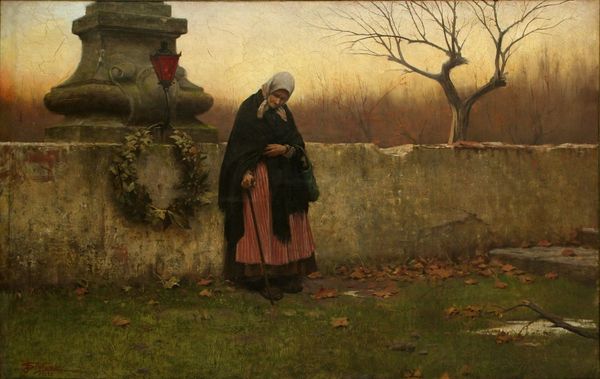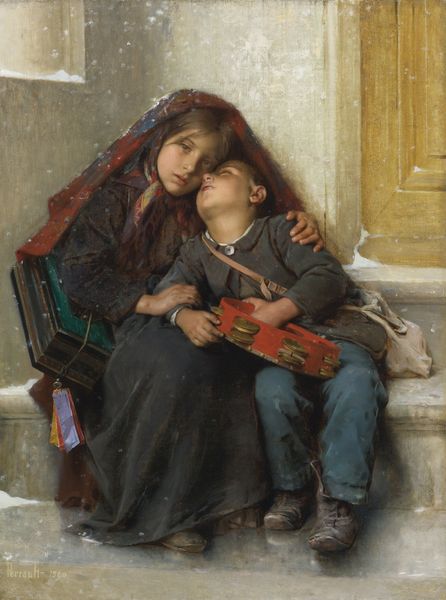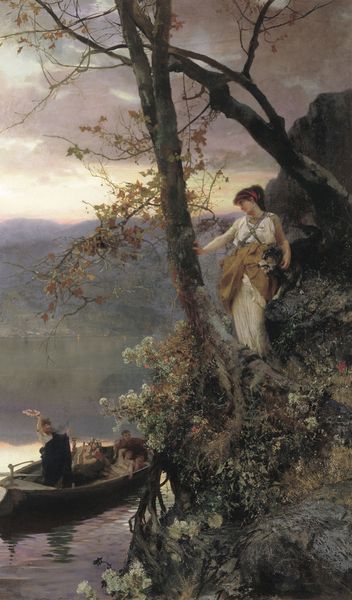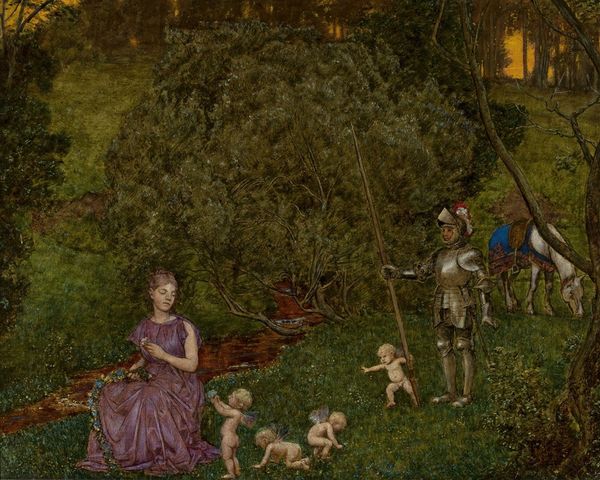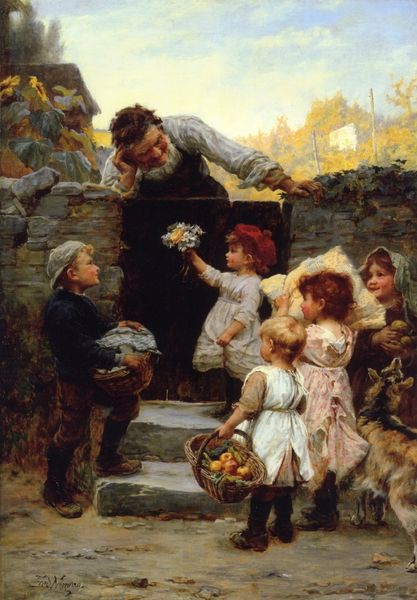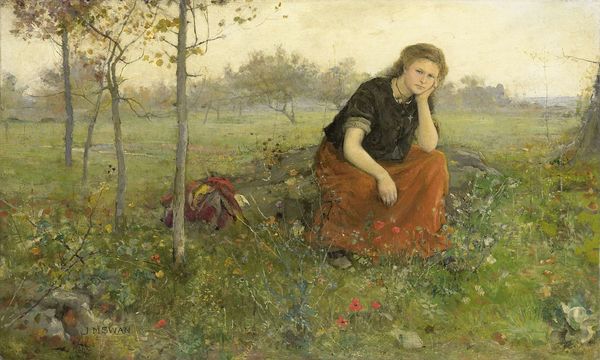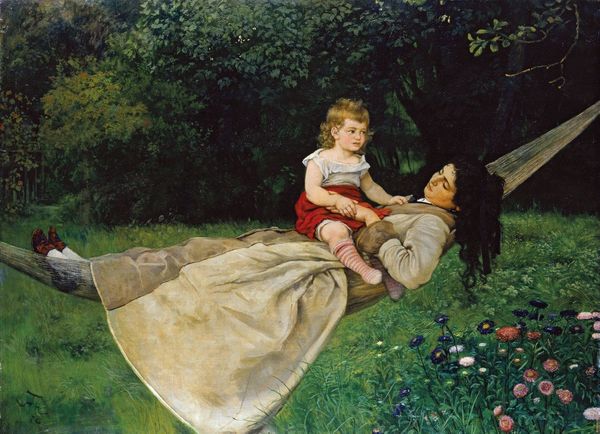
Copyright: Public Domain: Artvee
Curator: Ah, this piece always stops me in my tracks. Pascal-Adolphe-Jean Dagnan-Bouveret's "Hamlet et les Fossoyeurs", created in 1884. Editor: Gloom. That's the first thing that strikes me. A study in shades of mourning, isn't it? Even those white flowers seem to droop with a sort of melancholic acceptance. Curator: Exactly! It’s that incredible layering of light and shadow, so characteristic of academic art at the time. Dagnan-Bouveret captured the somber mood of that graveyard scene with an intensity. The piece exemplifies how history painting evolved into genre painting during this period, focusing less on grand battles and more on intimate, psychological moments. Editor: The gravedigger down in the pit is like a muted Greek chorus observing the prince’s anguish, and look at the placement of that skull in Hamlet’s hand: all of these actors contributing to a macabre still life. I wonder how it landed within the academic framework... It almost feels like it could slip into Romanticism. Curator: Oh, absolutely. Its focus on Hamlet’s contemplation definitely carries Romantic sensibilities, even while adhering to academic traditions in composition and detail. Remember the French Third Republic actively encouraged art that was moralizing but also rooted in reality. What better scene than Hamlet contemplating mortality to fit that bill? Also notice the attention to realism, especially in the garb of the gravediggers; it really plants you in that space. Editor: A rather uncomfortable space, might I add! I appreciate how Dagnan-Bouveret’s painting reminds us how even the most celebrated stories resonate deeply because of how they reflect real-world anxieties, and broader themes of social decay. Curator: Yes, there’s a powerful resonance. Perhaps this scene feels just as poignant now as it did then, speaking to our collective meditations on what comes after and the ephemeral nature of existence. I’ll ponder that for the rest of the day, I suspect! Editor: Indeed. I think the brilliance is in how it stages something deeply familiar as part of a tableau we rarely stop to truly consider: where do we fit within it? Food for thought.
Comments
No comments
Be the first to comment and join the conversation on the ultimate creative platform.

